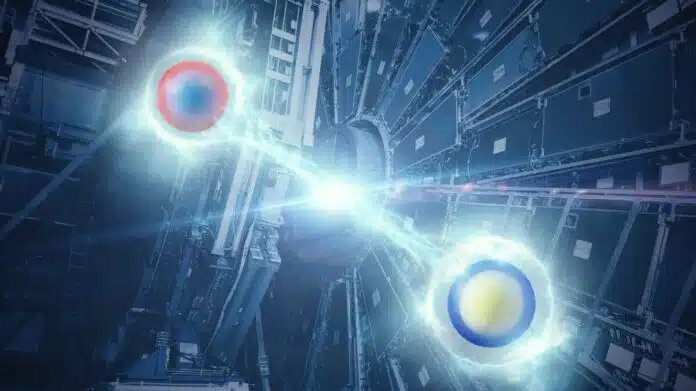
By Pranjal Malewar 19 Sep, 2024
Collected at: https://www.techexplorist.com/quantum-entanglement-observed-highest-energy-yet/89954/
In quantum entanglement, two particles are linked together so that their state remains the same no matter how far apart they are in space. This phenomenon has been observed in several systems and has important applications, such as quantum cryptography and quantum computing.
Entanglement has yet to be studied much at the high energies of particle colliders like the Large Hadron Collider (LHC). In a new study, the ATLAS collaboration successfully observed quantum entanglement at the LHC for the first time. They observed quantum entanglement between top quarks and at the highest energies yet.
First reported by ATLAS in September 2023 and confirmed by CMS in two follow-up observations, this result has opened a new view of the complex world of quantum physics. Also, observing quantum entanglement in a new particle system and at a much higher energy than previously possible is remarkable.
The top quark is the heaviest known fundamental particle. It usually decays into other particles before combining with other quarks, passing its spin and other quantum properties to those decay particles.
To observe entanglement between top quarks, the ATLAS and CMS collaborations studied pairs of top quarks from proton-proton collisions at an energy of 13 teraelectronvolts during the LHC’s second run, from 2015 to 2018. They focused on pairs where the quarks were produced together with low momentum relative to each other, as this is where their spins are expected to be strongly entangled.
The existence and strength of spin entanglement can be inferred from the angle between the directions of the charged decay products from the two quarks. By measuring these angles and correcting for experimental effects, the ATLAS and CMS teams detected spin entanglement between top quarks with a statistical significance greater than five standard deviations.
In its second study, the CMS collaboration also examined pairs of top quarks produced with high momentum relative to each other. In this situation, many top quark pairs are expected to have positions and times of decay that rule out classical information exchange at light speed. CMS found spin entanglement between top quarks in this case as well.
CMS spokesperson Patricia McBride said, “With measurements of entanglement and other quantum concepts in a new particle system and at an energy range beyond what was previously accessible, we can test the Standard Model of particle physics in new ways and look for signs of new physics that may lie beyond it.”
Journal Reference:
- The ATLAS Collaboration. Observation of quantum entanglement with top quarks at the ATLAS detector. Nature 633, 542–547 (2024). DOI: 10.1038/s41586-024-07824-z

Leave a Reply